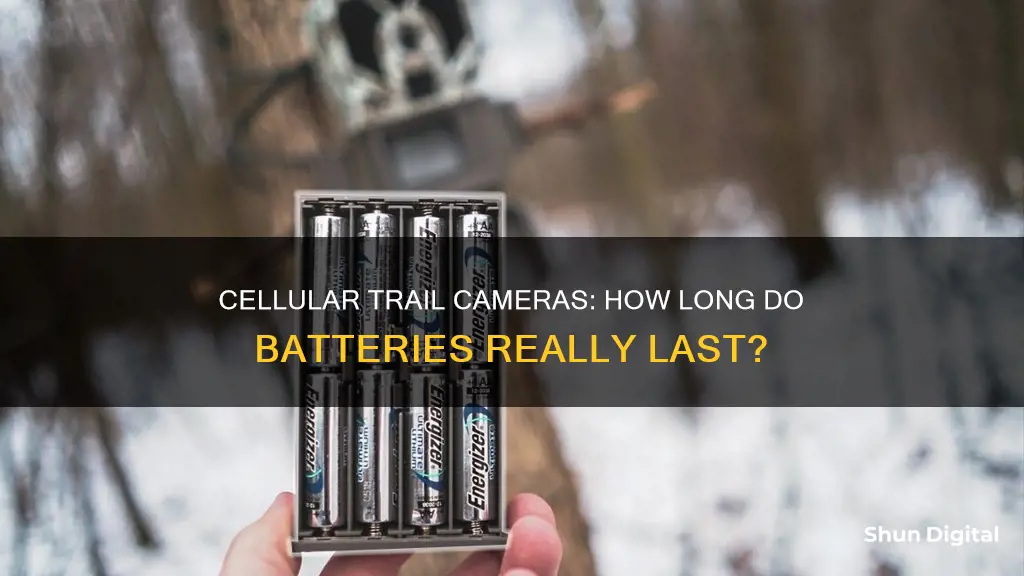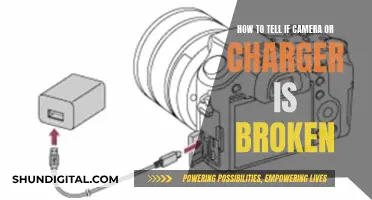
The battery life of a cellular trail camera is a pivotal consideration for those wanting to capture the unseen moments of wildlife. The answer to the question of how long these batteries last is complex and depends on a variety of factors.
Firstly, the type of battery used is important. Lithium batteries are lightweight and perform well in extreme weather conditions, lasting longer than alkaline batteries, which perform poorly in the cold. NiMH batteries are rechargeable and eco-friendly but don't usually outperform lithium batteries.
Secondly, the camera's features and usage patterns impact battery life. Higher-resolution images and videos, more frequent transmissions, and a higher sensitivity to movement and heat all drain the battery faster.
Additionally, external factors like temperature and signal strength can affect battery life. Cold temperatures can slow chemical reactions in the battery, reducing its performance, and a weak signal can cause the camera to spend more time transmitting photos, draining the battery.
The settings on the camera can also make a difference. A lower image resolution, reduced upload frequency, and decreased trigger sensitivity can help conserve battery life.
In conclusion, while there is no definitive answer to how long cellular trail camera batteries last, understanding the factors that impact their lifespan can help users make informed choices to optimise their camera's performance and ensure they don't miss those pivotal moments in the wild.
| Characteristics | Values |
|---|---|
| Average Lifespan | Several months to 8-12 months |
| Factors Affecting Battery Life | Transmission frequency, environmental conditions, image and video quality, sensor sensitivity, brand, mode of operation, temperature, signal strength, upload frequency, trigger sensitivity, night mode, resolution, firmware updates, placement, voltage and amperage compatibility |
| Types of Batteries | Lithium, alkaline, NiMH |
What You'll Learn
- Lithium batteries last longer than alkaline batteries, especially in cold weather
- Alkaline batteries are cheaper and good for less intensive camera use
- NiMH batteries are rechargeable, eco-friendly, and decent in moderate climates
- Cold weather negatively impacts battery life
- Extreme heat can also shorten a battery's functional life

Lithium batteries last longer than alkaline batteries, especially in cold weather
The longevity of a trail camera's battery life depends on several factors, including the type of battery, usage, transmission frequency, and environmental conditions.
Lithium batteries are known to be a better choice in cold weather. They are designed to last longer and can withstand extreme low temperatures without failing, making them ideal for outdoor applications. In comparison, alkaline batteries, although reliable for less intensive camera use and more affordable, are susceptible to performance degradation in colder climates.
Lithium batteries have a higher unloaded voltage, ranging from 1.8V to 1.9V, compared to 1.6V for alkaline batteries. When chilled to just below -20 degrees Celsius, alkaline batteries drop to 1.35V, while lithium batteries only drop by about 0.05V, showcasing their superior performance in cold weather.
In a real-world example, a researcher studying the elusive Arctic Fox in the arctic wilderness observed that their trail camera, powered by lithium batteries, managed to capture and transmit vivid images across several months without requiring a battery change. This impressive feat under extreme conditions highlights the advantages of lithium batteries in cold weather.
Additionally, lithium batteries are lighter than alkaline batteries, making them a preferable choice for portable devices. However, it is important to note that lithium batteries come at a higher price point.
To summarize, lithium batteries offer longer-lasting performance, especially in cold weather conditions, making them a superior choice for trail cameras compared to alkaline batteries. Their lightweight and reliable nature makes them ideal for outdoor use, despite their higher cost.
Traveling with Camera Batteries: Flying the Friendly Skies
You may want to see also

Alkaline batteries are cheaper and good for less intensive camera use
Alkaline batteries are a good option for those who want a cheap and readily available power source for their trail camera. They are widely available and usually the least expensive option. However, they have several drawbacks that users should be aware of.
Firstly, alkaline batteries start to decrease in power as soon as they are inserted and continue to lose power over time. This means that the brightness and range of night photos will decrease with every passing day. Alkaline batteries are also susceptible to cold temperatures, losing up to half their capacity in freezing weather. This can result in your trail camera not capturing any photographs until the temperature rises again. Additionally, alkaline batteries are prone to leaking acid, which can damage your device. They are also unreliable, even when new, and may not work well in hot temperatures.
Despite these drawbacks, alkaline batteries do have some advantages. They can operate in higher temperatures without any performance loss, making them a good option for researchers or users in hot climates. They are also a good choice for less intensive camera use. For example, a birdwatcher using a trail camera to monitor a nesting site might only need to recharge their alkaline batteries once every few weeks.
Overall, while alkaline batteries may not be the best choice for intensive camera use or cold climates, they can be a cheap and reliable option for users who don't need to capture a large number of photos or videos.
Charging a VTech Camera: A Step-by-Step Guide
You may want to see also

NiMH batteries are rechargeable, eco-friendly, and decent in moderate climates
NiMH batteries are a great option for those who want to use their trail cameras in accessible locations and recharge their batteries instead of frequently replacing them. NiMH stands for Nickel Metal Hydride, and these batteries are known for being rechargeable and eco-friendly. While they may not have the same lifespan as lithium batteries, they perform decently in moderate climates.
NiMH batteries are a popular choice for those who want to reduce their environmental impact. They are made of environmentally friendly materials and only contain mildly toxic substances. This makes them a safer option for those concerned about the potential hazards of battery disposal. Additionally, NiMH batteries are recyclable, further reducing their environmental footprint.
In terms of performance, NiMH batteries offer a decent lifespan in moderate climates. They are less susceptible to performance degradation in colder climates compared to alkaline batteries. This makes them a suitable option for those who use their trail cameras in locations with moderate weather conditions. However, it is important to note that NiMH batteries may not perform optimally in extreme cold or hot temperatures.
Another advantage of NiMH batteries is their reusability. They can be recharged multiple times, making them a cost-effective option for those who use their trail cameras frequently. This also reduces the hassle of having to replace batteries regularly. NiMH batteries are widely available in rechargeable AA, AAA, C, D, and 9-volt consumer battery sizes, making them convenient for a variety of applications.
It is worth noting that NiMH batteries have a lower voltage than standard alkaline batteries, which may impact their performance in certain devices. Additionally, they may not be suitable for extended use in trail cameras due to their lower voltage and potential voltage fluctuation in cold weather. Despite this, NiMH batteries remain a popular choice for many electronic devices and offer a good balance between performance and eco-friendliness.
How Long Do Camera Battery Chargers Last?
You may want to see also

Cold weather negatively impacts battery life
The performance of trail camera batteries is highly dependent on the surrounding temperature. Cold weather can slow down the chemical reactions within the battery, reducing its capacity and discharge rate. This means that the battery will not be able to provide sufficient power to the camera, resulting in shorter battery life.
In freezing temperatures, lithium-ion batteries, for example, experience a decrease in the rate of lithium-ion transfer in and out of the anode. This is caused by the formation of a lithium-ion alloy that plates onto the anode's surface, preventing the ions from entering the carbon site. As a result, the battery's capacity is drastically reduced, and the current flow is hindered.
Additionally, cold temperatures can cause the electrolyte in the battery to become stiff, further reducing the rate of lithium-ion transfer. This decrease in capacity leads to a drop in battery voltage and output power.
The impact of cold weather on battery life is also influenced by the type of battery used. Lithium batteries, for instance, are known for their lightweight properties and resilience in extreme weather conditions. They are a popular choice for trail cameras due to their longer lifespan and ability to withstand frequent and high-power draws. However, even lithium batteries can be affected by cold temperatures, and their performance may be compromised if not used, charged, and stored according to specifications for cold weather.
Alkaline batteries, another common type used in trail cameras, are more susceptible to performance degradation in cold climates. They tend to have a shorter lifespan compared to lithium batteries and may not be the ideal choice for remote areas with frequent battery replacements.
To mitigate the effects of cold weather on trail camera batteries, it is recommended to use batteries optimized for low-temperature performance and consider insulated cases or strategic placement of the camera to minimize exposure to harsh weather conditions.
Charged Camera Batteries: Marking Them Efficiently
You may want to see also

Extreme heat can also shorten a battery's functional life
For car batteries, hot summer temperatures drive up the heat under the hood, which accelerates the onset of battery failure. This is why many motorists are stranded alongside the road in the summer. AAA reports that it responded to 1.93 million battery-related service calls in the summer of 2023.
Similarly, trail camera batteries are affected by extreme heat. Direct sunlight can shorten the functional life of the device and potentially damage the battery. This is why it is recommended to avoid placing trail cameras in extreme temperatures.
In addition, the self-discharge rate of batteries increases as the temperature increases. This is due to the increased speed of chemical reactions within the battery. Irreversible damage (sulfation) occurs within a battery when stored at low states of charge (below 80% state of charge). Paste shedding, buckling, and other physical defects are also more likely to occur when batteries are stored at high temperatures.
Therefore, it is important to take steps to mitigate the impact of extreme heat on batteries. For car batteries, this may include regular inspections and servicing. For trail camera batteries, it may involve purchasing higher-quality batteries, such as lithium batteries, and avoiding placing the camera in direct sunlight or extreme temperatures.
Camera Batteries: How Long Do They Really Last?
You may want to see also
Frequently asked questions
The battery life of a cellular trail camera varies depending on several factors, including the type of battery, usage patterns, transmission frequency, and environmental conditions. On average, under moderate use, a cellular trail camera battery can last for several months. However, frequent transmissions, high-resolution images or videos, and extreme weather conditions can shorten the battery life to a few weeks.
The battery life of a cellular trail camera is influenced by the type and quality of the battery, the frequency of image and video capture, the transmission frequency, sensor sensitivity, and environmental conditions. Higher-resolution images, videos, and frequent transmissions will drain the battery faster. Extreme temperatures, especially cold, can also impact battery performance.
To extend the battery life of your cellular trail camera, consider the following:
- Use high-quality lithium batteries, which offer longer lifespan and better performance in extreme weather conditions.
- Reduce the frequency of image uploads to the cloud or switch to daily uploads instead of instant uploads.
- Lower the image resolution if you only need basic scouting information.
- Disable the video feature if you don't need it, as it consumes more power.
- Adjust detection delay and multiple shot settings to reduce the number of pictures taken after the motion sensor is triggered.
- Add external power sources such as solar panels or external battery boxes to increase battery life for several months or even years.
The recommended battery type for cellular trail cameras is lithium batteries. Lithium batteries offer a longer lifespan, better performance in extreme weather conditions, and are less susceptible to cold temperatures compared to other battery types. Alkaline batteries are also an option but may have a shorter lifespan and degrade in colder climates. Rechargeable NiMH batteries are cost-effective and eco-friendly but may not provide consistent power, especially in cold weather.







